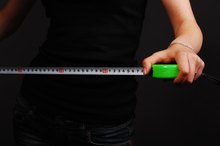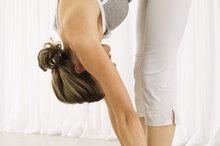Is 20 Percent Body Fat Good or Bad?
Hearing the news that you have 20 percent body fat might sound discouraging, but don't get overly alarmed. Although your gender plays a significant role in determining your ideal amount of body fat, having a body-fat percentage of 20 does not categorize you as obese, according to the American Council on Exercise.
For Women
To keep healthy, women should maintain a higher body-fat percentage than men. Women require extra deposits of fat because of such factors as menstruation and child birth. The American Council on Exercise notes for athletic women, having 20 percent body fat is ideal. Women should maintain a level of 10 to 13 percent body fat for essential functions. ACE reports that to be obese, women must have body fat of at least 32 percent.
For Men
Healthy Body Fat Percentage Loss
Learn More
Men don't require the same amount of body fat as women, although a male who finds out he has a a body-fat percentage of 20 percent should hardly be alarmed. ACE notes men need only 2 to 5 percent fat for essential functions, and a man with 20 percent body fat is average. Among men, a body-fat percentage of 25 percent or above results in a diagnosis of obese.
Managing Your Body Fat
Regardless of your gender, keeping your body fat at a healthy percentage is ideal. A male with a body-fat percentage of 20 percent has to be slightly more careful than a female, as the male is just 5 percent away from being obese. The University of Pennsylvania recommends taking three steps to manage your body fat. Perform strength-training exercises at least twice a week to keep your body fit and muscular, eat a healthy, low-fat diet in which fat makes up no more than 30 percent of your caloric intake and sleep at least seven hours per night.
Determining Body Fat
The Ideal Body Fat Percentage
Learn More
Although it's possible to get a rough estimate of your body-fat percentage through online calculators and mobile apps, a common way to obtain a more accurate reading is through a skinfold test. In this test, your doctor or nutritionist uses skinfold calipers to pinch your body in designated areas, including your thigh and arm, to determine a reading. Repeated tests ensure the most accurate reading.
Related Articles
References
Resources
Writer Bio
Toronto-based journalist William McCoy has been writing since 1997, specializing in topics such as sports, nutrition and health. He serves as the Studio's sports and recreation section expert. McCoy is a journalism graduate of Ryerson University.









